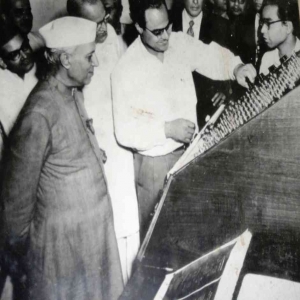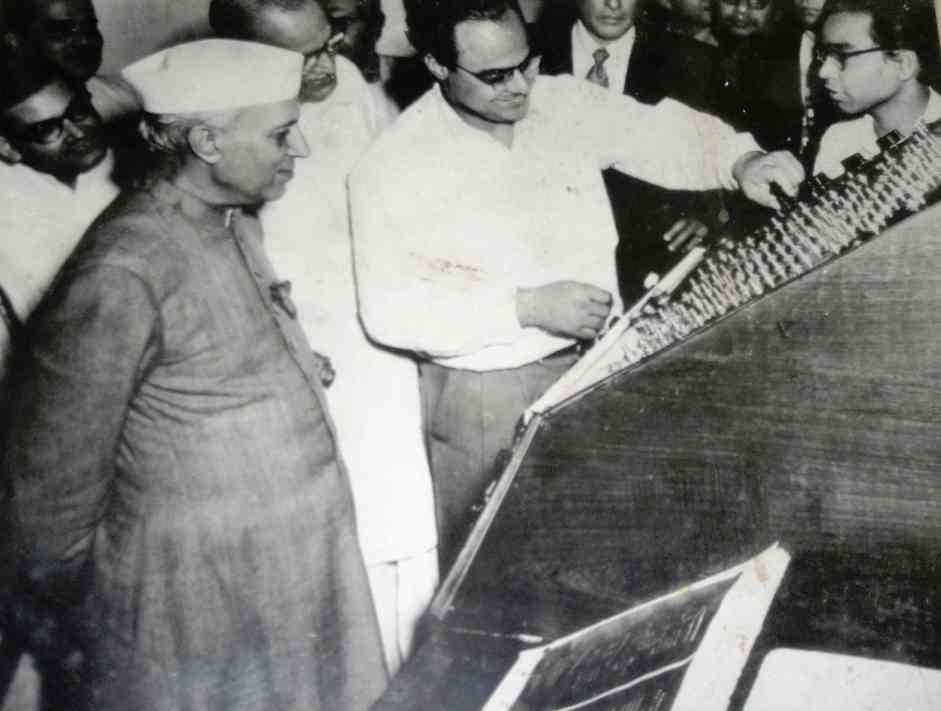
.png) Jacob Peenikaparambil
Jacob Peenikaparambil

One of the fundamental duties of an Indian citizen, according to the Indian Constitution, is to "develop a scientific temper, humanism, and the spirit of inquiry and reform" (Article 51A(h)). Scientific temper is an approach to life—a habit of thinking and acting based on evidence, reasoning, and openness to new information. It demands that we ask questions, seek proof, and accept conclusions only when they are supported by verifiable facts.
According to Pandit Jawaharlal Nehru, a scientific temper is crucial for India's progress and development. He believed that it would help overcome superstitions, promote rational decision-making, and foster a more cohesive and progressive society. In the absence of critical thinking, people become vulnerable to manipulation by those who exploit ignorance, whether they are self-proclaimed godmen, political demagogues, or sellers of pseudoscientific products.
Nehru was convinced that India could become a progressive nation only when its people were guided by critical thinking. In a country like India, where religion holds great sway over the masses, developing such thinking is essential to prevent the spread of blind faith and superstition. However, the past decade has seen religious and political leaders promoting practices with no scientific basis, rooted instead in superstition. Some of these practices are even harmful or detrimental to human life.
Certain political parties have also been promoting unscientific religious practices to consolidate their vote banks. In a secular country like India, political parties and the government are expected to refrain from publicly endorsing any particular religion, although individuals have the freedom to practise their faith. Yet it has become common for political leaders to patronise and promote religious events using taxpayers' money. Large processions such as the Kanwar Yatra, which last for days and cause massive public inconvenience, are tolerated with little public protest. Though a few enlightened voices, including journalists, have spoken out against the crowding, stampedes, and occasional deaths linked to such events, the general public's silence reflects an erosion of scientific temper and critical thinking.
For example, The Free Press Journal reported on August 8, 2025, that nearly 20 devotees, including young girls, went missing from Kubereshwar Dham in Sehore, Madhya Pradesh, during a religious event. On the same day, The Times of India reported that the Madhya Pradesh State Human Rights Commission had sought a report from district authorities on the incident. The news report also noted that seven people had died during the event organised by self-styled spiritual guru Pradeep Mishra.
Media reports stated that a stampede occurred during the distribution of rudraksha (sacred beads), an activity previously banned after deaths caused by mismanagement. The event also caused several hours of traffic jams on the Indore–Bhopal Road due to the large crowds. Despite the loss of lives, missing persons, and severe traffic disruptions, there was no significant public outcry. Since the organisers reportedly enjoy political backing, no action has been taken against them, leading to repeated tragedies.
Stampedes at religious gatherings are now a recurring tragedy in India. As reported in The Hindu on June 5 2025, the following major incidents took place between January and June 2025:
1. January 8, 2025: Six devotees were killed and dozens injured during a scramble for tickets to the Vaikunta Dwara Darshanam at Lord Venkateswara Swamy temple, Tirumala Hills.
2. January 29, 2025: Thirty people were killed and 60 injured during a pre-dawn stampede at the Maha Kumbh in the Sangam area, as millions jostled for a holy dip on Mauni Amavasya.
3. February 15, 2025: Eighteen people were killed and over a dozen injured in a stampede at New Delhi Railway Station, mostly pilgrims returning from the Maha Kumbh.
4. May 3, 2025: Seven people were killed and 80 were injured in a stampede in Shirgao village, North Goa, during the annual Lairai Jatra at Shree Lairai Devi Temple.
While poor crowd management may be the immediate cause of these tragedies, the deeper reasons include increasing religiosity promoted by political and religious leaders and the decline of scientific temper. Instead of fostering the spirituality taught by religions, what is often promoted today is ritualistic religiosity, driven by commercialisation and politicisation. This climate is fertile ground for blind faith and superstition.
It is not only the uneducated who fall victim to harmful practices—many highly educated individuals do as well. For instance, as per the directive of the Bombay High Court, the Brihanmumbai Municipal Corporation (BMC) banned the feeding of pigeons in public spaces due to associated health hazards. However, Jain monk Muni Nileshchandra Vijay threatened an indefinite hunger strike from August 13 against the closure of the Dadar Kabutarkhana, declaring that his community would defy the court's order if it conflicted with their religious practice. As reported in The Hindu on August 11, 2025, he even stated that the Jain community, though peaceful, would "take up arms for religion" if necessary.
Any criticism of blind faith or superstition is often met with intolerance, and cases are sometimes filed against critics under the pretext of "hurting religious sentiments." Several Indian rationalists have been assassinated for speaking out against superstition and religious extremism—among them Narendra Dabholkar, Govind Pansare, and Gauri Lankesh, who were all strong advocates for rationalism.
In this climate of rising fundamentalism, cultivating critical thinking is more urgent than ever. Civil society organisations and religious leaders must focus on promoting the core values taught by religions—love, compassion, justice, mindfulness, and respect for human dignity—rather than ritualism. Rituals are merely means to spiritual growth and are not ends in themselves. Any religious ritual that harms human life or the environment must be avoided.
For example, the core teaching of Jainism is ahimsa—non-violence towards all living beings, in thought, word, and deed. If feeding pigeons harms the health of hundreds of people, it should be stopped. The birds will find food elsewhere; they will not starve without public feeding. This is common sense, supported by scientific reasoning.
Religious and cultural leaders can play a transformative role by discouraging harmful superstitions and interpreting traditions in ways that align with reason and compassion. History shows that reform from within a community has a stronger impact than external criticism.
Scientists, educators, and communicators should present scientific concepts in simple, engaging ways. Documentaries, public lectures, podcasts, and exhibitions can bring science into everyday life. Media outlets should avoid promoting pseudoscience or miracle claims without evidence and instead fact-check popular myths while highlighting genuine scientific achievements. Collaborations between journalists and scientists can enhance accuracy.
Social media, if used wisely, can be a powerful tool for spreading scientific knowledge. Short videos, infographics, and interactive content can reach younger audiences quickly and counter misinformation.
However, promoting scientific temper and critical thinking faces obstacles. Deeply held beliefs are often tied to identity and community, making people defensive when questioned. Misinformation spreads faster than corrections, especially online. Moreover, vested interests—both political and commercial—profit from keeping people uncritical and emotionally reactive.
In India, some politicians shield unscientific practices under the guise of "respecting religious sentiments," while in reality exploiting them. Overcoming these challenges will require patience, respect, and persistent engagement.